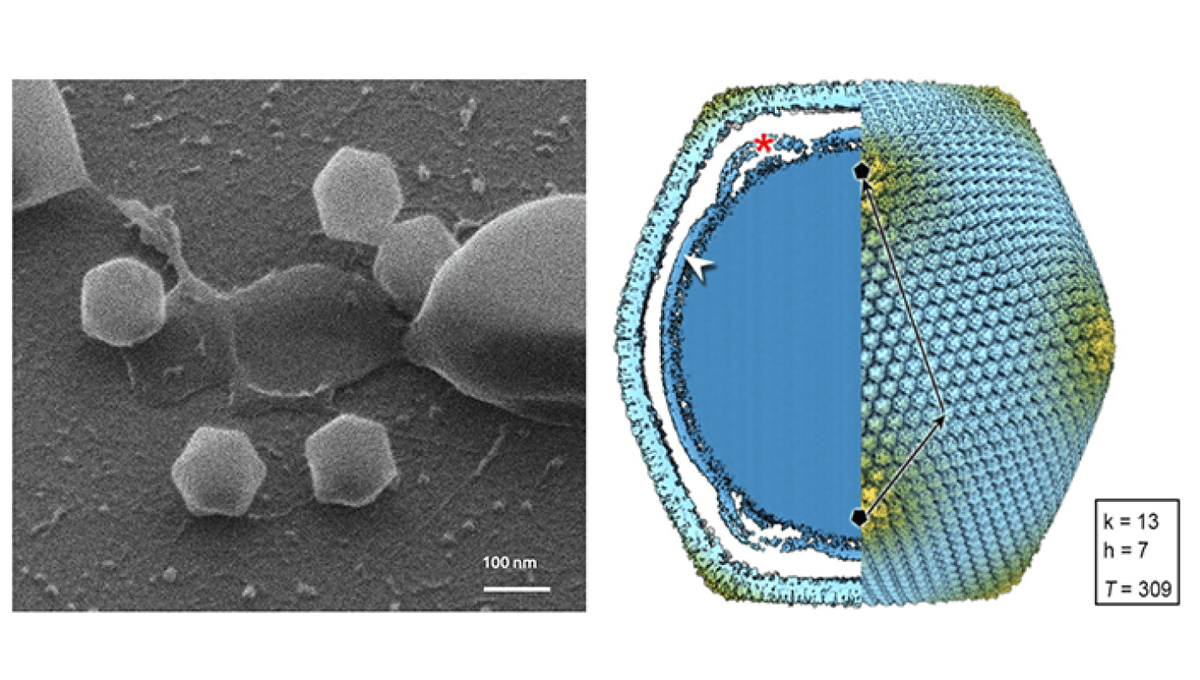
Researchers have discovered the first giant virus in Finland. The specimen demonstrates that such huge viruses are more common in northern regions than previously thought.
Viruses are tiny. Even compared to the smallest bacteria, which can be about 200 nanometers (a nanometer being one-billionth of a meter) in diameter, viruses are still teeny tiny, with the smallest typically measuring around 20 nanometers. However, there are some viruses that are truly massive in comparison to their diminutive relatives and can actually be as large as bacteria. These viruses infect amoebas – unicellular organisms – and other microorganisms.
In a new study, researchers at the University of Jyväskylä identified a new virus they discovered when environmental samples were mixed with a culture of amoeba called Acanthamoeba castellanii. This particular giant virus, which they called Jyvaskylavirus, is 200 nanometers in diameter, or about two times the size of an influenza or coronavirus.
“Through an international collaboration, we elucidated the genome and structure of the Jyvaskylavirus, which was found to be related to Marseilleviruses previously isolated from France. Other new giant viruses were also detected in environmental samples,” professor Lotta-Riina Sundberg from the University of Jyväskylä explained in a statement.
The research demonstrates that giant viruses are actually more prevalent in soil and water than previously thought, even in northern environments such as those in Finland.
The first giant virus to be identified, called Mimivirus (short for microbe mimicking virus), was discovered in 2003 inside an amoeba found in a cooling tower in Bradford, England. At first, this virus was mistaken for a bacterium because it could be seen under a light microscope, which is impossible for other regular-sized viruses.
Since then, several more giant viruses have been discovered, most of which have been found in Europe or South America. Some specimens have even been found in extreme environments such as the Siberian permafrost, discovered due to rising temperatures. These so-called “zombie viruses” are benign, preferring to infect amoebae rather than humans – but this may not be the case forever. Researchers have warned that climate change could mean more harmful viruses are released and awakened as the ice melts.
Giant viruses are also different from regular viruses because of the sheer number of genes they have. For instance, Pandoravirus, which was discovered in 2013, has around 2,500 genes, while a simple flu virus has around 8.
They really are fascinating things, but because they are such a recent discovery, there is still much we do not know about the life cycles or distribution of giant viruses.
“The discovery [of Jyvaskylavirus] will help to understand the interactions between microbes and the role of viruses in regulating populations of all living organisms, as well as providing new insights into the structure of giant viruses”, Sundberg added.
The study is published in eLife.
Source Link: First Giant Virus To Be Found In Finland Is A Whopper, Twice The Size Of Influenza